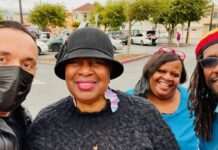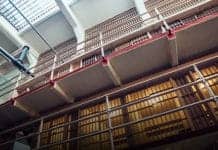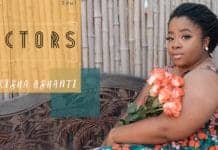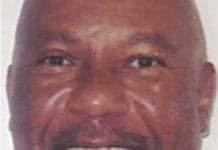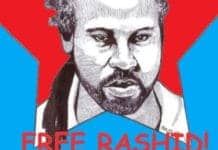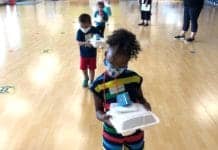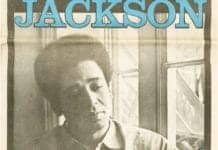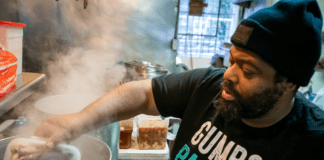
Early data shows that Black Americans are more at risk for the coronavirus than other US ethnic groups; the death rate disparity is even starker.
Article by Sumiko Saulson, photos and on-the-street interviews by Daniel Danzig
Before Afro-British actor Idris Elba reported publicly that he and his spouse were infected with the coronavirus, many African Americans believed people of African heritage were immune to the virus. This early false sense of invulnerability caused some of us to be incautious.
Black people are not immune to the virus, which is taking a heavy toll on our community. Mr. and Mrs. Elba are recovering, but here in the USA, the report is not so rosy for Black folks when it comes to COVID-19. In Louisiana, where a third of the population is black, a staggering 70 percent of corona virus victims are African American.
African Americans need to protect ourselves
“My regular job at the Chase Center is gone for now, so I am using the time to work on my fitness brand. Also, I’m trying to help out and play a part by working with the city of Oakland to prepare COVID-19 test kits,” said a vivacious young woman named Joli.
“I believe that good or bad things can come out of something like this; it depends on how you focus your energy. I intend to come out stronger. I am concerned about some areas of the country, particularly in the South where the impact on the Black community is not taken seriously and lifting restrictions too early will turn the Black community into a test case – or people into test dummies just like Tuskegee,” she warned.
Black Americans are being encouraged by false media reports to be cavalier about social distancing and wearing masks. Don’t be fooled. We need to protect ourselves.
African Americans are among the most vulnerable because we are economically underserved. We are on the frontlines more often.
Our concerns are not being taken seriously by a vast majority of government officials. We should be wary of any plan to lift restrictions that puts us into greater danger while protecting more gentrified areas. It is false freedom that costs us our lives and the lives of our loved ones.
More of us are on the frontlines

Black Americans, including both those born in the USA and African and Caribbean immigrants, are heavily represented in public and front-facing public positions like care workers, transportation and retail. Jason Hargrove, a Detroit bus driver, posted a video about the risks of his job and an unguarded woman openly coughing just 11 days before his death.
Sadly, his story is not unique. Black Americans are more likely to work in risky jobs. Among bus drivers, 27.7 percent are Black. Black Americans represent only 13 percent of the total U.S. population, 14 percent if you include those of us of mixed racial heritage.
According to a 2015 Bureau of Labor Statistics report, Black workers make up 30 percent of the direct care workforce. Only 9 percent of registered nurses are Black. Black caregivers are heavily represented in positions such as home health care aides, nursing assistants and orderlies, and many of them work in nursing homes.
“I provide in-home care and also deliver food for Caviar. I’m a retired medical assistant, so I am more aware of the medical issues than others in my family. Some people I know are taking it more seriously than others. But I am careful. I understand how this virus works and how dangerous it is,” explained Arlington, a middle-aged man.
“Because I have chronic bronchitis, I’m vulnerable, so I only leave home as necessary. I am really concerned about my neighbors. I’ve learned through life circumstances to be more sensitive to others, so I have told them I am available. I don’t try to play the tough guy. This whole situation makes me sad. I am a crier. I wish there was something like an insecticide we could just spray to kill this virus.”
Black care workers are also more likely to have a higher personal income and lower family income, meaning they are more likely to have dependents and be unable to leave their high risk roles as essential workers. That means that African American seniors are more likely to live with children and grandchildren who are bringing the virus home.
Fewer of us can work from home

“By the grace of God I am fine and able to work from home. I have had no massive impact. But mentally it’s hard when I think about all the death out there. I want to be available to support others,” said a serious young man named Tianti.
“I think the universe might be telling us something: We have to do better. It doesn’t matter what religion or faith you belong to – I am a Christian – but we all need each other. Religious people need to listen to what the experts say about this virus and understand that science is good. Science is not in conflict with religion. There is no community without unity.”
Tianti is fortunate enough to be able to work from home, but many of us are unable to. Black and Latino workers are more likely to be essential workers and unable to work from home. This is part of a pattern of racial job segregation that goes back over a hundred years.
African Americans and Latinos are disproportionately employed in low-paying or middle-income service jobs. These include retail workers, maids and janitors, lower pay grade medical workers, bus drivers, delivery persons and more. As a result, more white and Asian workers have desk jobs and can telecommute.
Reopening service jobs will put more of us at risk
“All staff, including myself, have been laid off from our San Francisco restaurant. Hey, I am waking up every day and have a roof over my head. So, I am doing OK, but it’s hard not to have my routine around working every day. Also, it is hard when the guidelines seem to change so often. I feel that in some areas of the country there is definitely not enough concern for the impact this is having on the Black community,” observed Cortne and Joli, as they soaked up sunshine that brought warmth and hope into a dismal situation.
When shelter-in-place rolls back, it is likely that things will reopen in the order that they shut down. That means that reduced capacity restaurants will be making a comeback before entertainment venues like night clubs, or even movie theaters, reopen. Workers like Cortne and Joli are likely to be sent back to the front lines if restaurants reopen during the period of modified shelter-in-place.
According to the Centers for Disease Control, African Americans are more likely to live in crowded urban environments. We live in racially segregated food deserts, where we are unable to get healthy food or access to medicine. Black folks are more likely to be forced to go to small, crowded corner stores where social distancing and mask wearing are less enforced.
Medical bias
Many of the African Americans who have passed away had pre-existing medical conditions. Sadly, pre-existing medical bias against Black patients makes it harder for African Americans to receive care for both underlying conditions and the COVID-19 virus itself.
This may help explain why, in heavily white Wisconsin, Black folks represent only 6 percent of the population, yet close to 40 percent of COVID-19 fatalities. Lack of access to adequate medical facilities due to illegal segregation, lack of insurance, and lack of hospitals that serve lower income families, including African Americans, may also account for more deaths.
According to a thorough Mother Jones account on the subject, African Americans were infected more than the general population in over two thirds of the states that kept race statistics. Death tolls are even more shocking, with 18 out of 23 reporting states, including the District of Columbia, reporting more Black deaths.
A recent CDC report showed that 33 percent of hospitalized patients were Black. We live in racially segregated neighborhoods and are likely to go to urban medical centers that predominately serve the Black community. These hospitals are underfunded and overcrowded, and patients coming in for a medical service are more likely to be in close quarters or come into contact with people who have COVID-19.
Dangerous conditions for Black seniors

Nursing homes are often in the news these days as hotbeds for COVID-19. Many nursing homes around the nation are refusing to report infection rates. Racial disparities in nursing care mean that Black seniors are often placed in lower income, poorer neighborhood residential treatment facilities. They are more likely to have crowded conditions. An NPR study of New York nursing home deaths from COVID-19 found that the more people of color were in the nursing home, the higher the body count.
“I live alone so this feels isolating and I am to having to adjust. I was so grateful to get a call from my nephew and FaceTime with him the other day,” said Kit, whose face was covered with a candy-striped cloth mask. “I’m a retired RN. I asked some RN friends if they felt like they wanted to go back to work, but I know for me it is not the right thing to do.
“I am staying at home unless necessary to go out. I would rather be safe than sorry. I am more concerned about older people who feel more isolated than most. I hope our leaders don’t send people back to work too early, sooner than is safe,” Kit declared.
Although many grocery stores and drug stores have special hours for seniors like Kit, social distancing is not equal. Many poor people, including urban Black folks, are going to the Dollar Tree and the 99 Cent or Less stores to save money. Narrower aisles in these stores than at Walgreens or Safeway make it harder for shoppers to avoid walking close to each other.
Furthermore, a lot of young people are still disobeying social distancing and mask-wearing rules. They do not take the rules seriously, or understand how they are putting older people at risk.
Fear of racial profiling

For many African Americans, wearing a mask or a scarf over the face is a frightening proposition. Racial profiling by law enforcement, grocery and drug store personnel, and nosy neighbors or NIMBY (Not In My Back Yard) types reinforce a fear of looking threatening.
Trayvon Martin was just wearing a hoodie when George Zimmerman, a neighborhood watch member, gunned down the 17-year-old Black boy. Black folks, especially but not only young adult men and teenage boys, are afraid of looking suspicious. Wearing masks can attract unwanted attention from ignorant mall security guards and untrained neighborhood watch, as well as bigoted law enforcement personnel.
One solution to this problem is government-mandated wearing of masks, such a San Francisco’s ordinance, which went into effect April 22, 2020. Five other Bay Area counties and a number of surrounding counties have enacted similar ordinances.
“We are all equally affected and we are all vulnerable, regardless of race. My family is OK economically, because our philosophy has been to have six months of necessary emergency savings. It was awkward when I first starting wearing a mask in stores, but now that everyone is doing it, it is not an issue. Actually, anyone could use the disguise to commit a crime,” said Mutombo, who demonstrated how a mask can make a person hard to identify.
However, the mask ordinances have yet to go into affect nationwide. This means that in areas where there is no mandate, Blacks still have the same fears of being profiled while wearing a mask. Such fears can lead to a lower number of African Americans wearing protective face gear. Fear of being racially profiled may lead to a cavalier attitude amongst Black teens and young adults, many of whom are still laughing off mandated mask-wearing ordinances in Oakland.
Bestselling author Sumiko Saulson writes award-winning multicultural sci-fi, fantasy, horror and Afrosurrealism. Winner of the 2017 Afrosurrealist Writer’s Award, 2016 HWA Scholarship from Hell, and 2016 BCC Voice Reframing the Other Award, (he)r monthly series Writing While Black follows the struggles of Black writers in the literary arts and other segments of arts and entertainment. (S)he is gender non-binary. Support (he)r on Patreon and follow (he)r on Twitter and Facebook.
Daniel Danzig is a documentary and street photographer from Oakland and lives in the East Bay. His work can be seen at www.instagram.com/danzigcom, www.danieldanzigphotography.com and www.flickr.com/photos/oaktownphoto.

 Store
Store



